ActiveHiking & Walking12 camping and hiking tips I wish someone had told me when I startedDon’t make the mistakes I made when I started outWhen you purchase through links on our site, we may earn an affiliate commission.Here’s how it works.
ActiveHiking & Walking12 camping and hiking tips I wish someone had told me when I startedDon’t make the mistakes I made when I started outWhen you purchase through links on our site, we may earn an affiliate commission.Here’s how it works.
Don’t make the mistakes I made when I started out
When you purchase through links on our site, we may earn an affiliate commission.Here’s how it works.
(Image credit: Getty Images)

(Image credit: Getty Images)
Leave no trace refers to the practice of packing up all your rubbish and taking it with you when you’re out and about – there should be no trace of your visit when you leave a trail or a camping spot. That’s one of the many tips I wish someone had told me before I started hiking and camping more.
After years of roaming the countryside, clocking up miles and visiting some of the most extraordinary places in the world, I collected 12 hiking and camping tips every beginner should know about, from why it is okay to hike alone to how joining a walking group can make time spent outdoors more enjoyable. Ready to explore the Great Outdoors like a pro? Let’s go.
1. You can hike alone
Lots of hiking guides online state that you should never go walking alone. This is rubbish - unless you’re in bear country (unlikely in Blighty!), hiking solo can be perfectly safe and really enjoyable. Just take a few safety precautions if you go it alone – plan your route properly, check weather conditions and let someone know where you’re going and how long you’ll be.
(Image credit: Matt Kollat/T3)
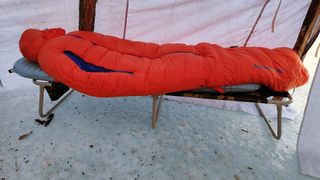
(Image credit: Matt Kollat/T3)
2. Temperature matters
Thebest sleeping bagscome with a specific measure of how warm the bag can keep you and are usually split into up to three categories – you’ll see ‘comfort’, ‘limit’ and ‘extreme’ temperature ratings listed for most sleeping bags. ‘Comfort’ is the optimum temperature at which you’ll feel warm and comfortable - look for a bag with a comfort rating lower than you expect to encounter on your coldest camps.
Thebest camping mats, on the other hand, have something called an R-value, which tells you how warm your new mat is to sleep on (this measures its capacity to resist heat loss, hence “R”). The higher the R-value, the more insulating it’ll be. Broadly, an R-value below 2 is best for summer use, 2 to 4 will suit three-season use, and winter campers should look for 4 or above.
3. Water-resistant does not mean waterproof
This should be self-explanatory, but you should always choose fully waterproof gear, be itwaterproof jacketsorbackpacking tents. Steer clear of anything marked ‘showerproof’ or ‘water-resistant’. Read more about this in Pat’s excellent explainer here:How to stay dry outdoors– Understanding the hydrostatic head rating of your jacket.
Sign up to the T3 newsletter for smarter living straight to your inbox
Get all the latest news, reviews, deals and buying guides on gorgeous tech, home and active products from the T3 experts
(Image credit: Leo Francis Photography)
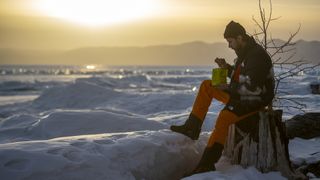
(Image credit: Leo Francis Photography)
4. Camping food doesn’t have to be boring
Camping food has a bad rep for being all about boring noodles and ration packs. While basic one-pot meals are fine for wild camping and lightweight adventures, if you’re in a proper campsite and you can bring lots of kit with you can cook yourself up a real feast in the great outdoors. Buy a goodcamping stoveor, even better, invest in a cast-iron skillet, stick it over a wood fire and whip up all manner of goodies – skillet brownies, anyone?
5. Don’t forget your headtorch
Not only are these a godsend when you’re looking for somewhere nettle-free to pee when camping, but you can also point a headlamp into a plastic milk bottle full of water to create a cosy makeshift camping light. Read T3’sbest headtorchguide for more info on this hiking/camping essential.
6. Join a walking group
Bored of walking alone? There are plenty of hiking groups you can join to meet outdoorsy mates.The Ramblersis the largest walkers' rights organisation in Great Britain and a great place to find like-minded people to hike with. Or check Facebook for local groups hiking in your area.
7. You don’t need all the gear
You don’t need to spend hundreds on thebest hiking bootsor thebest tentswhen you first give hiking or camping a go. Look for affordable high street brands, shop second-hand online or borrow a kit from friends to work out what you need – and what you don’t – before investing.
Yes, a posh hiking kit is important for tackling serious routes, and a top-of-the-range tent will be the best for tough mountain conditions – but if you’re going on a casual walk, you can wear trainers, and a supermarket pop-up tent will do you fine for your first weekend of camping if you’re on a budget.
(Image credit: Carrie Marshall)
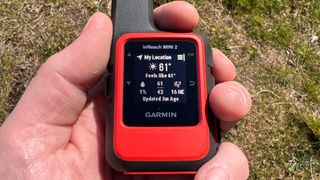
(Image credit: Carrie Marshall)
8. Practice navigation and route planning
9. Don’t go ‘phone-only’
(Image credit: The North Face)
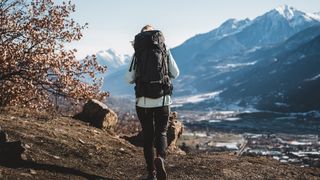
(Image credit: The North Face)
10. Work out how long your hike will take
To work out how long it’ll take you to walk a certain distance, allow one hour for every three miles you measure on a map (a twenty-minute mile is roughly correct for most adults) and add an extra 30 minutes for every 1,000 feet of elevation you climb.
11. Choose the right boots
Before you head out on a hike, you need the right boots on your feet to take on the trail in comfort. Hiking boots are usually made of either leather or fabric – leather is naturally waterproof and warm but can be heavier than fabric boots and may need to break in.
Fabric boots, on the other hand, are lighter and more comfortable but tend to be less durable and warm. Whichever you choose, look for boots that are fully waterproof, ideally using a waterproofing technology such as Gore-Tex and with tough, grippy rubber soles. Read ourbest walking bootsandbest women’s hiking bootsguides for more buying advice.
(Image credit: Klattermusen)
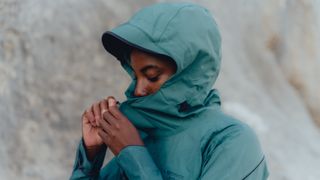
(Image credit: Klattermusen)
12. Pack the right kit
You’ve got the right boots – so what else do you need in your backpack for a day hike? Make sure you pack a waterproof jacket, waterproof trousers, sunscreen, sunhat and sunglasses in yourhiking backpack(which should also have a waterproof rain cover; see above) in case the weather suddenly changes, plus extra warm layers (e.g. a qualityfleece jacket). Carry plenty of water, and pack snacks if you’re out for more than an hour or two. A physical map in a waterproof case is a must-pack, and a small first aid kit is a sensible addition.

The new Aston Martin Vantage Roadster is drop-top perfectionHave we already found the most beautiful car of 2025?
Have we already found the most beautiful car of 2025?

SwitchBot launches world’s first multitasking household robot – here are 5 features I didn’t expectWhat exactly is a multitasking household robot, you might ask?
What exactly is a multitasking household robot, you might ask?
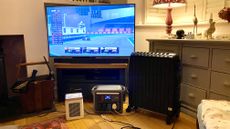
Change my mind: the smaller, the better with portable power stationsPut your portable power station to work when you’re not using it
Put your portable power station to work when you’re not using it

This rugged adventure Garmin is mega cheap in Walmart’s Black Friday saleThe Instinct 2 is a top watch for outdoor and sport enthusiasts
The Instinct 2 is a top watch for outdoor and sport enthusiasts
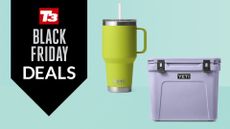
YETI’s best-selling products are ridiculously cheap in Amazon’s Black Friday saleFancy yourself a tumbler, rambler or cooler? Amazon’s reduced them all
Fancy yourself a tumbler, rambler or cooler? Amazon’s reduced them all

AKASO Seemor 200 night vision goggles review: unparalleled clarity for nighttime adventuresAKASO’s new NVD unlocks the night with cutting-edge colour vision technology
AKASO’s new NVD unlocks the night with cutting-edge colour vision technology
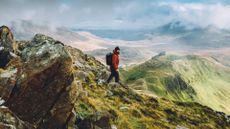
8 must-have hiking gadgets for tackling cold and wet trailsWhether it be wet and rainy, or super chilly, these 8 gadgets can make your outdoor adventure even more enjoyable
Whether it be wet and rainy, or super chilly, these 8 gadgets can make your outdoor adventure even more enjoyable
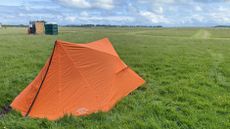
Vango Classic Instant 300 review: a festival-goer’s dream tentSuper quick to pitch and pull down, this reasonably priced tent is spacious, tall and well-featured for festival use
Super quick to pitch and pull down, this reasonably priced tent is spacious, tall and well-featured for festival use
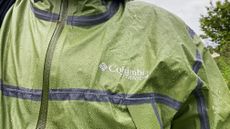
Is Columbia’s OutDry Extreme the best waterproof-breathable material that no one is using?ODX hasn’t revolutionised the outdoor apparel world in the way its creators expected it to – but that could be about to change…
ODX hasn’t revolutionised the outdoor apparel world in the way its creators expected it to – but that could be about to change…

Best YETI coolers 2025: ice cold excellenceKeep food and beverage frosty with our curated selection of top-rated YETI coolers for every occasion
Keep food and beverage frosty with our curated selection of top-rated YETI coolers for every occasion